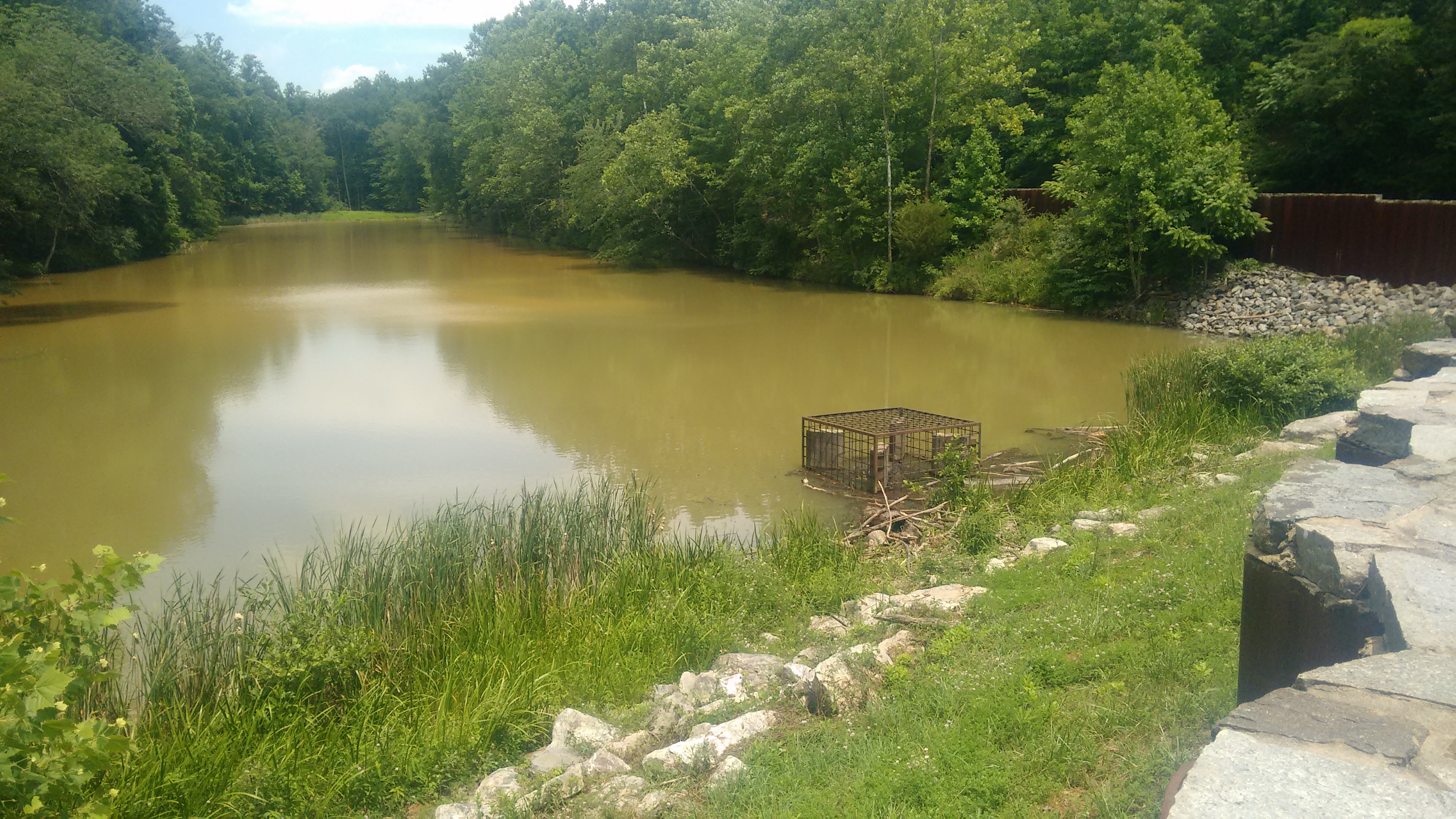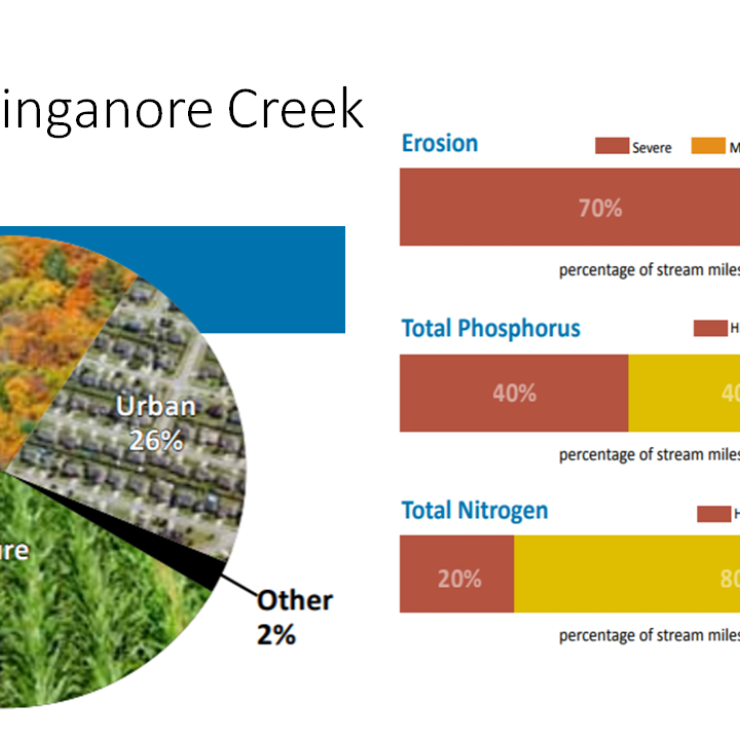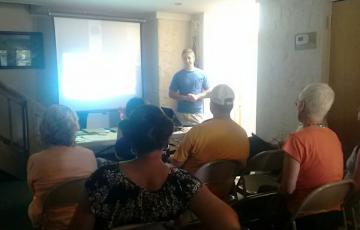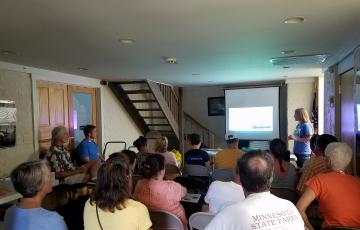
Every summer in Frederick County, Maryland, news hits about algae blooms, sediment, and other pollution in Lake Linganore. Source of nearly half of the drinking water in Frederick City and the central part of the County and an important center for recreation for the Linganore community, Linganore Creek and its 83-square-mile watershed are vital for Frederick County. But historic agricultural runoff, continued construction, and the threat of major development just upstream from the lake all put this drinking water source at risk. Residents of the areas have organized to address these concerns and test the water every day of the summer, and this weekend the Clean Water Frederick team joined forces for our fourth Frederick County Watershed Workshop to share information about what pollutes Linganore Creek and what residents can do to clean it up.
First, Jeff Mattheiss and Dr. Kevin Sellner from Hood College in Frederick shared about the Center for Coastal and Watershed Studies' water quality testing to monitor for cyanobacteria, which feeds off the phosphorus that runs off of upstream land and into the lake. Cyanobacteria blooms have hit the lakes in the Linganore Creek watershed in recent years, turning the water pink and releasing dangerous toxins into the water where kids love to play. Testing, public information sharing, and treatments have been successful in reducing cyanobacteria growth in recent years, but increased runoff or even the dredging planned for later this year might increase it again.
Next, Caitlin Wall from the Potomac Conservancy and I shared information about watersheds, polluted runoff, and water quality in Frederick County, especially Linganore Creek. The lower half of the creek has very poor water quality, with severe amounts of bank erosion and phosphorus and nitrogen pollution. Living next to the lake, participants in the workshop weren't surprised to learn about the lake's water quality - they see it every day - but were eager to learn what they could do on their own properties to clean it up.

One exciting option is the Friends of the Lake's Buffer Program! Erin Johnson, president of the group, told participants how they could get involved. Lakefront owners property owners can get advice, assistance, and reimbursement to plant 15' buffer zones of native plants next to the lake. Buffer zones like these absorb nutrients like phosphorus and nitrogen in stormwater runoff before they reach the waterbody, capture sediment runoff, prevent erosion, and provide crucial habitat for fish and other wildlife. Seven residents are planting buffer zones this year, and participants in the workshop were eager to expand the program in the next. Through programs like these throughout the watershed, this important source for Frederick's drinking water can be preserved for future generations.





